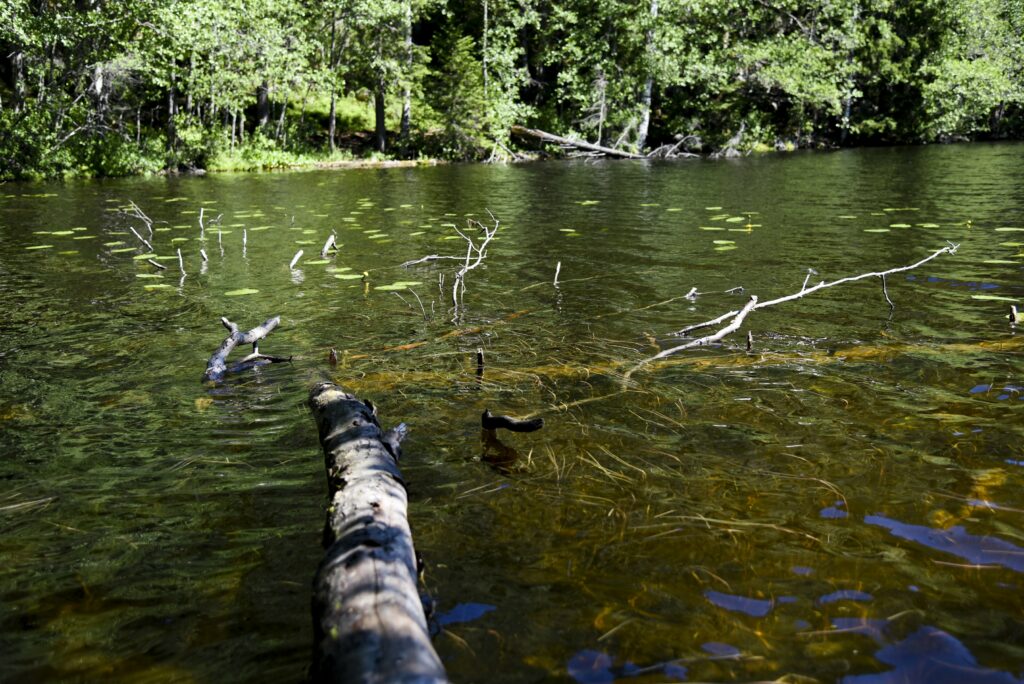State of waters and restoration

Approximately one quarter of Kuopio’s surface area is covered with water. The majority of the water surface area consists of large lakes, such as Kallavesi, Suvasvesi, Syväri and Suur-Ruokovesi. The ecological status of these large lakes is largely good. In the case of Suvasvesi, the status of the water is excellent. When it comes to North Kallavesi, Onkivesi, Maaninkajärvi and Suuri Ruokovesi, the water status is satisfactory. Several measures have been proposed to improve the satisfactory condition in the action programme for the water management of North Savo for the years 2022–2027.
Diffuse loads are of great importance
In the lakes of Kuopio, phosphorus is a so-called minimum nutrient that determines their eutrophication level. Eutrophication is a process in which lots of nutrients accumulate in a lake, which can cause algal blooms and depletion of oxygen, both of which have negative effects on fish and other organisms. Some of the phosphorus leached into water systems comes from natural leaching and airborne deposition. In the Kallavesi-Sorsavesi area, leaching and deposition account for more than one third of the phosphorus load, whereas on the more heavily loaded Iisalmi waterways, they only account for one quarter of the phosphorus load.
The most significant source of human origin in this context is agriculture, which is reflected, for example, in the status of water bodies in the Maaninka area. Pointlike sources of phosphorus are urban and industrial wastewater treatment plants, the largest of which are the Lehtoniemi wastewater treatment plant and the factories of Savon Sellu Oy. Point loading accounts for about 2 per cent of the phosphorus entering Central Kallavesi.
Nitrogen does not eutrophicate inland waters as much as phosphorus. Less than half of the nitrogen load in the watercourses of Kuopio is from natural leaching and deposition. The share of agriculture is high in areas dominated by agriculture, such as Maaninka. Pointlike sources of nitrogen are urban and industrial wastewater treatment plants, the largest of which are the Lehtoniemi wastewater treatment plant and the factories of Savon Sellu Oy. Point load causes approximately 13 per cent of the nitrogen load in Central Kallavesi.
With wastewater, organic substances enter waterways, and when they decompose, oxygen is consumed (so-called biological oxygen consumption, BOC). The largest sources in Kallavesi are the plants of Savon Sellu Oy and the Lehtoniemi wastewater treatment plant. Loading of organic substances at the Lehtoniemi wastewater treatment plant has decreased significantly compared to the mid-1990s. No significant changes have taken place in the loading from Savon Sellu.
Small waters
Kuopio also has plenty of small water areas that are sensitive to external loading. The central urban area contains dozens of small lakes and ponds owned by the city, the status of which has been partly monitored since the mid-1980s. Some of them have also been restored. The city monitors the status of its small waters and manages them with oxidisation and by transplanting young fish in them, for example. A separate management and restoration programme for small water bodies has been drawn up.
More information on the status of water bodies and water management
- North Savo Water Management Operational Programme
- Government grants for improving water management and fisheries
- Vesi.fi portal and map service
- Information about the Iisalmi watercourse
- Information about the nearby lakes